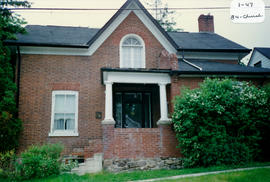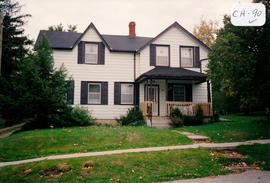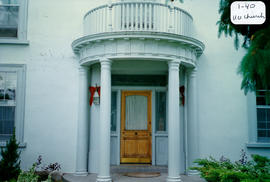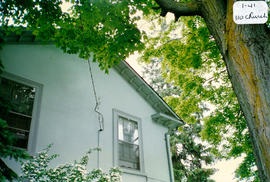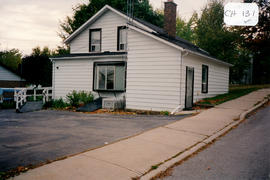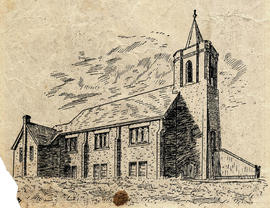The Scott House is located at 110 Church St. (on the northwest corner of Church and Frederick Streets). It was built in the neoclassical style around 1870. The two-storey, rectangular main building has a symmetrical façade, a centre hall plan, and large window openings with high floor to ceiling dimensions. It has a medium-pitched, gable roof with identical chimneys at both ends that have elaborate, corbelled brickwork. The original, single-storey, rear additions have been modernized (as required). There is a wide entrance that includes a glazed door, sidelights, a transom, and deep, painted, wood panel reveals. The semi-circular entrance portico has Doric columns, stylized entablature and a balustrade feature that is not original. It is, however, still considered to be in keeping with the style of the house. The original verandah was on the front and left side of the house and the upper balcony was accessible by an upstairs doorway. The house has large, 6/6 double-hung windows with wide, exterior, moulded-wood casings. Names and a year have been scratched into the bottom pane of glass. There are sculptured, curvilinear soffit brackets and end, gable wall eaves returns. The house has wood plank construction, a painted stucco exterior finish, painted exterior wood trim, and a stone foundation. Stucco was likely the original cladding, as plank construction enabled the plastering of interior wall surfaces and the stuccoing of exterior ones. According to the 2000 inventory, the house is well-maintained. It also notes that the modernization and remodelling are sympathetic with the original building. (1, 3)


